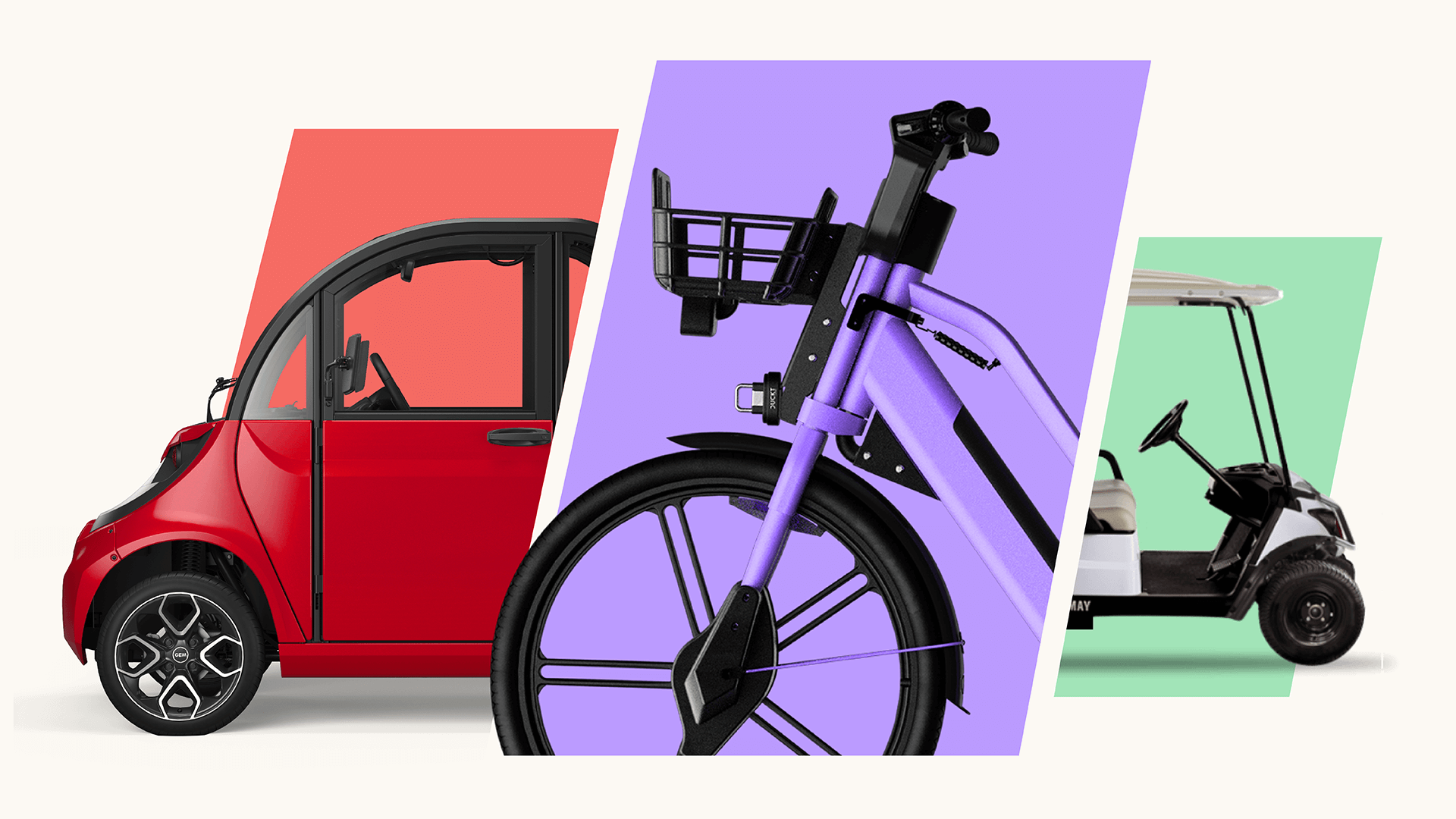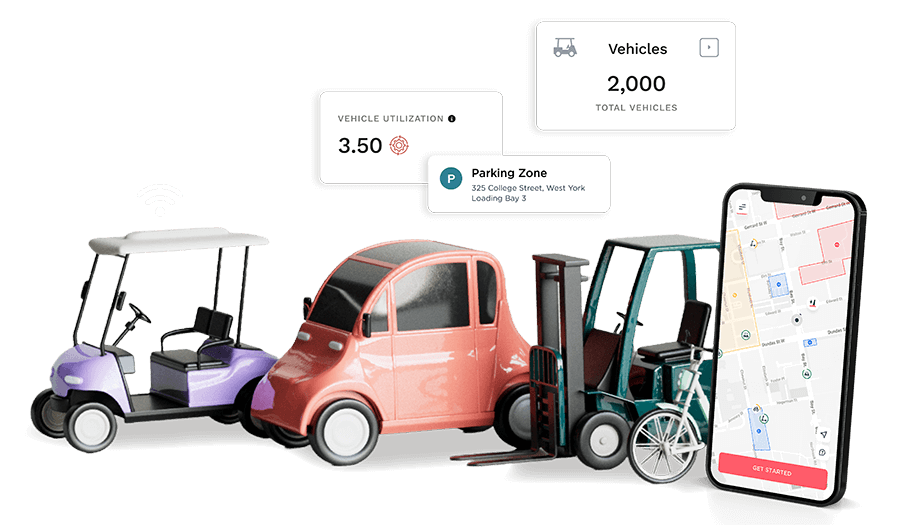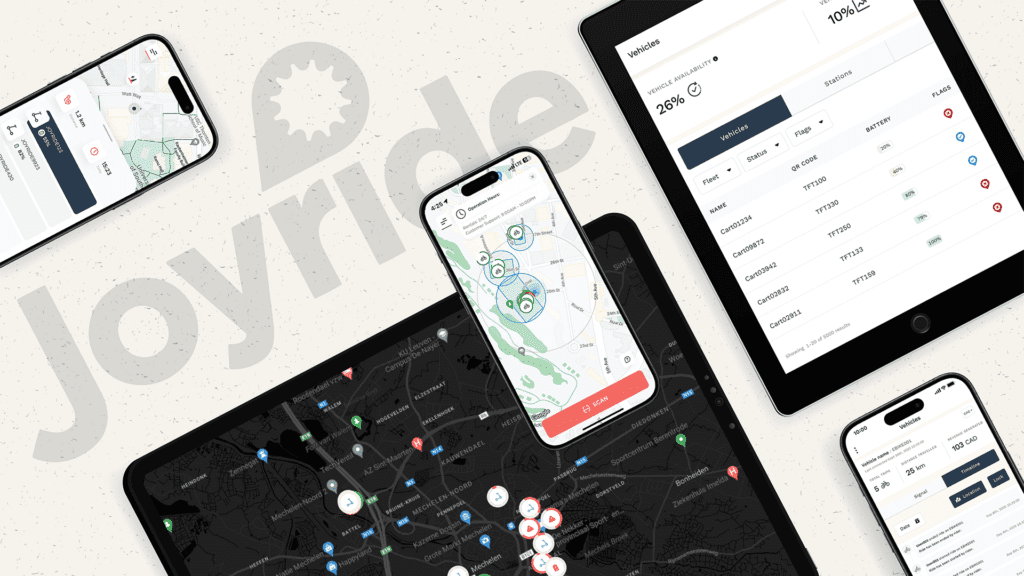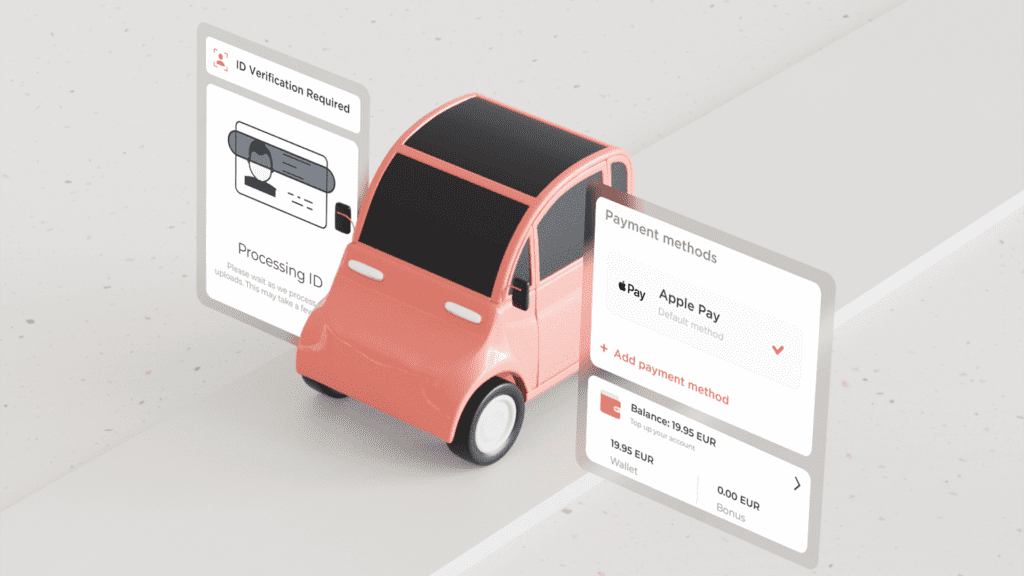Anyone familiar with the term micromobility — first coined by Micromobility Industries Co-Founder Horace Dediu — knows that short distances are better traveled on small vehicles. Scooters and e-bikes are a prime example, but if you’re sizing up the micromobility market, you should know that it’s having a growth spurt. Enter minimobility.
In this post, we explore the differences between micro and minimobility, why your business should consider a fleet of minimobility vehicles, and how smart technology enables sustainable, electric transportation at scale.
What is minimobility?
The word micromobility is usually used to describe lightweight form factors weighing less than 500 lbs. This includes electric kick scooters, bicycles, skateboards, mopeds and cargo bikes. Mini mobility (or ‘minimobility’) refers to their heftier three or four-wheel siblings –think golf carts, minicars, quadricycles and pod cars.
While most people can agree that micromobility offers a sustainable and efficient solution to congestion, pollution and overcrowded transportation systems, it’s also understood that the solution to modern mobility isn’t one size fits all.
Both terms can be used to describe a variety of use cases and business models. E-scooter sharing schemes and bike hires are prominent examples of micromobility services, whereas minimobility is more commonly associated with private low-speed vehicles (LSVs), also called neighbourhood electric vehicles (NEVs).
What are the benefits of minimobility?
For decades, bicycles and mopeds have delivered benefits on a global scale. Yet it is only in the past few years that these modes have received widespread recognition from governments and authoritative sources. Sustainable and shareable vehicle systems are increasingly cited by firms like McKinsey and Bloomberg as part of the solution to tackle challenges associated with urbanization, and face the ever-accelerating issue of climate change head on.
Sounds like pretty big expectations for small vehicles, but how do the benefits differ between micromobility and minimobility?
Small but mighty
Whether micro or mini, each vehicle offers its own unique advantages. Dockless e-scooters enable door-to-door travel, while traditional pedal bikes are a familiar convenience. E-mopeds zoom riders to their destination with extra speed, and cargo bikes laden with packages are used by the likes of Amazon and UPS to nimbly circumnavigate traffic jams.
It sounds promising, but what about winter, bad weather, or when your journey takes you beyond city limits?
In many ways, minimobility vehicles solve for the limiting factors of micromobility. A roof keeps you covered from rain, while enclosed sides keep you warm through the cold season. Tandem riding isn’t a safety issue with seatbelted passenger seating, and more power under the hood makes golf cars and LSVs competitive with cars–going so far as to be the modal choice for entire communities.
Making mobility more accessible
The key to right-sizing mobility is to identify the specific niche or application that best suits your business goals and local market demand. A dockless e-scooter is perfect for a student zipping to class, but definitely not ideal for a parent picking up three kids from school. No one vehicle is best for everything, which is exactly why owning a fleet of micro or mini electric vehicles is a ripe business opportunity.
The convenience of micro and minimobility go beyond single use. Both can be made shareable–meaning more people can tap into the benefits of electric vehicles. With a sophisticated fleet management software platform, any vehicle can be made available for public rental, or limited to a private sharing network.
The best part for fleet owners is that smart technology scales. Scooter or bike-share operators using the Joyride platform can easily go multi-modal; adding one or two minimobility vehicles to their existing platform, adding more as demand grows. This flexibility is essential for accommodating the evolving needs of businesses and cities.
Managing a smart-connected fleet
Managing a diverse fleet of vehicles can be logistically challenging, especially if rentals are managed through inefficient manual processes. The solution? Smart technology.
Through the integration of GPS, IoT devices and software platforms such as Joyride, smart technology enables users to locate, reserve and unlock available shared vehicles with ease. It also generates valuable data on vehicle usage patterns, which can be analyzed to optimize fleet operations, plan predictive maintenance, and even send targeted marketing straight to your ideal customer.
Additionally, user authentication and payment processing are built into the platform. Bluetooth, NFC tags or RFID cards eliminate the need for physical keys or rental kiosks, and in case of theft, vehicles can be easily traced, increasing the chances of recovery.
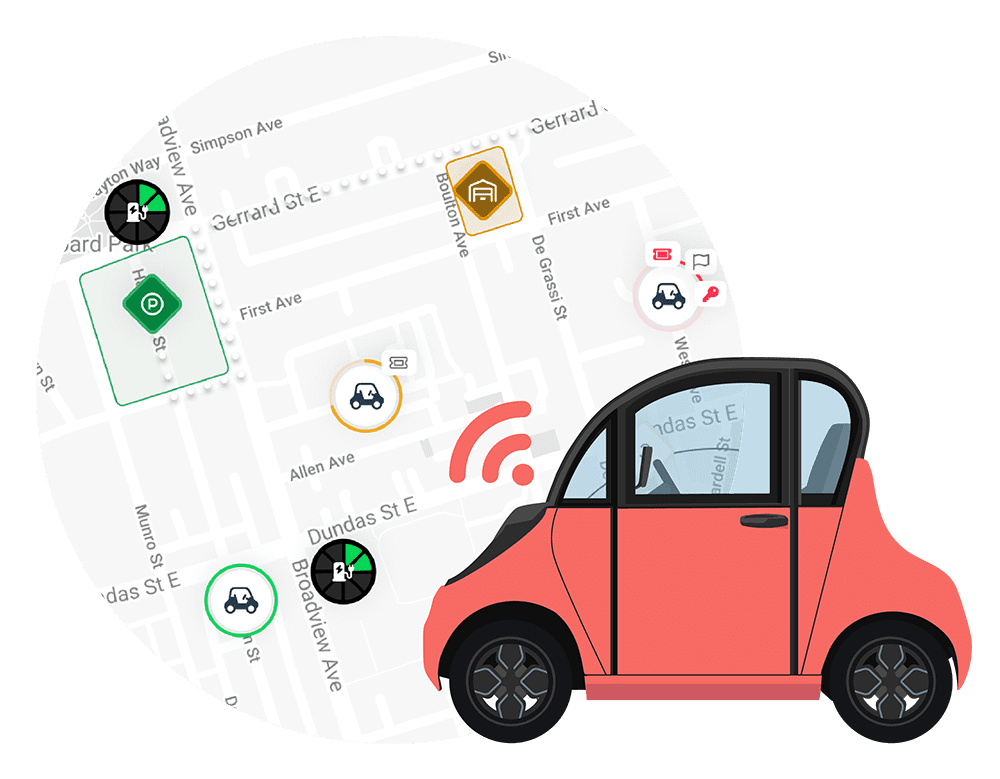
Sustainable, shareable, scaleable
Many cities and regions are now actively supporting and regulating minimobility as part of their efforts towards a long term plan for sustainable urban transportation. This regulatory backing provides legitimacy and growth opportunities for electric golf carts and minicars to be incorporated into existing infrastructure.
As it is, more than half of U.S. roadways are 35 mph or less, meaning neighbourhood electric vehicles such as the GEM (which has a top speed of 25mph) meet federal safety standards and are street legal. To demonstrate this, the company recently released an interactive road map that allows users to explore the accessibility of minimobility driving in their area.
GEM is a prime example of how integrating with a software platform opens up new opportunities for fleet owners. When GEM vehicles, such as the e2 and e4, come equipped with internet connectivity via Joyride, they instantly become keyless, shareable and trackable. This makes it easier to proliferate these sustainable vehicles across city streets and private campuses, including universities, residential complexes and corporate grounds.
Thinking bigger
One barrier to minimobility uptake is cost. Starting at around $10,000, and reaching up to $40,000 for all the bells and whistles, purchasing a personal minimobility vehicle is still expensive for most people.
Younger generations, in particular, are showing a preference for shareable transportation options. The privately owned car, once viewed as a rite of passage in Western society, is now viewed by many as an impractical financial burden. Why spend hundreds of dollars on gas and insurance for a vehicle that will sit idle 96% of the time?
Shared scooters, bikes and public transportation might suit for now, but sooner or later this generation will require access to vehicles better suited for cargo, distance or comfort. It’s clear that small electric vehicles have a big role to play, but perhaps it’s time to think a little bigger than micro.
How to get started with a minimobility fleet of your own
Over the past 12 months, we’ve seen – and have been serving – a significant increase in demand for shared minimobility vehicles and golf carts. Joyride’s software solutions are hardware-agnostic, meaning we integrate with most smart-enabled vehicles, no matter the size.
Getting started with a minimobility fleet is not unlike launching a shared scooter or bike scheme. You are provided with a branded Rider App that is used by customers to scan and rent your vehicles, along with an Operator App used by your fleet maintenance team, as well as a full backend management tracking system. The latter is what’s used to accept and monitor payments, watch your fleet move in real time, send updates to your customers and watch key performance metrics unfold.
After considering your business model and use case, contact Joyride’s team here to learn more about our offerings, SaaS pricing structures, vehicle selections and support network. Looking to tap into an existing shared minimobility network? There are plenty of options to explore with us.

